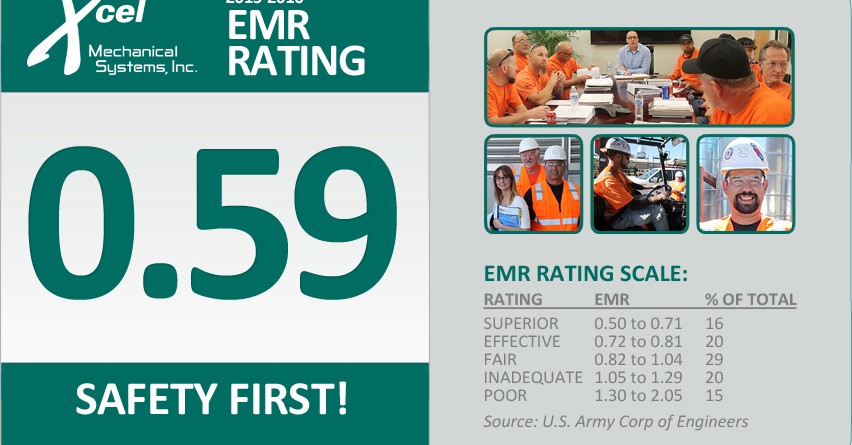
GARDENA, CA—Employees across the company are engaging in safe business practices at our project sites, in our shops, and in our offices, as indicated by an EMR rate that continues to tick lower, said Steve Prisk, company safety director.
“I’m happy to report that our EMR Rate is low,” said Prisk. “Right now it’s about 0.59, which is really good.” This good news, he said, comes from increased awareness, a company-wide culture of safety reflected in our programs and practices, and extreme diligence on the part of our employees. “But it’s not time to celebrate. It’s time to keep up the great work.”
In the construction industry, a contractor’s Experience Modification Rate (EMR) can have a profound impact upon business. Insurance carriers use EMR rates to gauge past cost of injuries and future chances of risk. A lower EMR rate means lower worker’s compensation insurance premiums charged to the contractor. Lower insurance costs means lower total overhead for the business, enabling the contractor to be more competitive in bidding process.
An EMR of 1.0 is considered the industry average. An EMR of 1.2 would mean that insurance premiums could be 20% higher than for a company with an EMR of 1.0. That 20% difference must be passed on to clients in the form of higher bids for new work. “It all connects,” said Prisk. “It effects our ability to bid and win new work for our teams. And in the case of us suddenly having a higher EMR rate, it can shut us out of the bidding process entirely, and even disqualify us from gaining access to certain jobsites. It’s bigger than big.”
Construction company safety directors know that programs developed to eliminate or mitigate hazards and prevent injuries are important steps toward lowering their EMR rate. But these steps are only the starting point. It takes employee awareness, buy-in, and continued diligence to achieve a low EMR rate, and maintain it. “We all have a stake in this,” Prisk said. “Safety is as important as anything else we do.”



